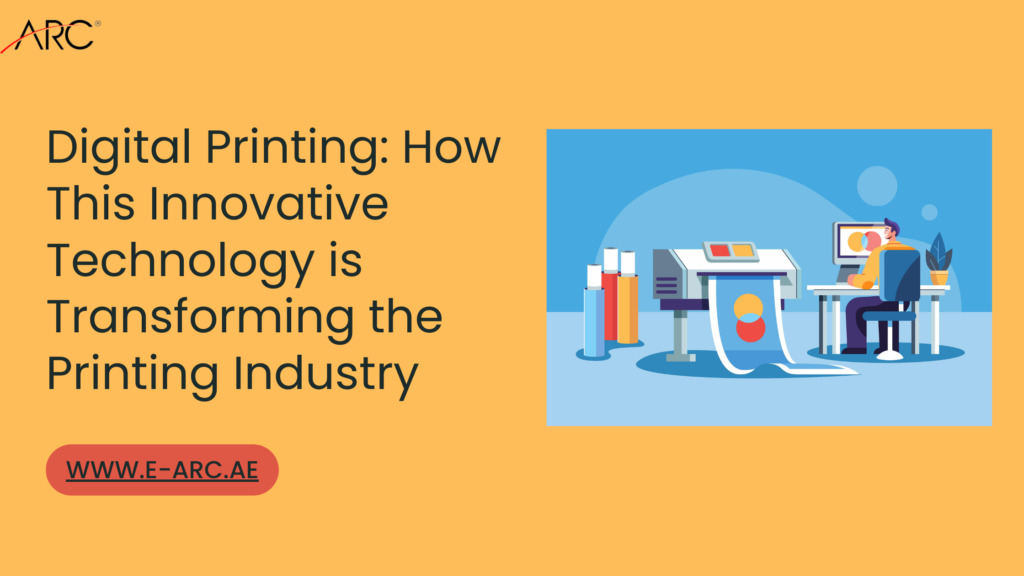Digital printing is an innovative technology that is revolutionizing the printing industry. By allowing images to be printed directly onto a variety of substrates, digital printing eliminates the need for traditional offset printing and its associated printing plates. This has opened up many new possibilities for businesses looking to create high-quality printed materials. In this blog post, we will explore the many ways that digital printing is transforming the printing industry.
The History of Digital Printing
Digital printing has its roots in the early 1970s when computer-aided design (CAD) technology was first developed. In the 1980s, digital printing emerged as a viable alternative to traditional offset printing due to advancements in image capture and digital media processing technology. Digital printing quickly gained popularity for its ability to produce short runs at a fraction of the cost of offset printing. In the 1990s, digital printing continued to improve and gain traction as a preferred printing method for various industries.
Today, digital printing is considered the most advanced form of printing available. It is used for a wide range of applications including commercial printing, marketing materials, signs and banners, packaging, and even fabric printing. Digital printing offers an array of advantages over traditional offset printing, including faster turnaround times, increased accuracy, greater flexibility, and lower costs. With the ongoing advances in digital printing technology, it looks set to remain the industry standard for many years.
The Benefits of Digital Printing
Digital printing is changing the way the printing industry works by bringing with it numerous advantages. Here are some of the key benefits:
1. Cost-effectiveness:
Digital printing services eliminate the need for expensive printing plates and setup costs, meaning that you can save money on each print run. This makes digital printing particularly cost-effective for smaller runs.
2. Speed:
Digital printing is much faster than traditional methods and can produce prints in just a few hours. This means that you don’t have to wait for days to get your prints.
3. Quality:
Digital printing produces sharp and vivid prints of very high quality. The advanced technology used in digital printing also allows for accurate color matching and a wide range of special effects such as embossing and foiling.
4. Flexibility:
Digital printing is highly flexible and can be used to print on a wide variety of substrates, from paper and cardstock to plastics, metals, and fabrics.
5. Customization:
Digital printing allows you to easily customize your prints by changing colors or images on each run. This makes it ideal for short runs of personalized products, such as business cards, flyers, or t-shirts.
Overall, digital printing has revolutionized the printing industry, providing numerous advantages over traditional printing methods. With its cost-effectiveness, speed, quality, flexibility, and customization capabilities, digital printing is sure to remain a key part of the industry for many years to come.
The Future of Digital Printing
The future of digital printing looks incredibly promising, with technology advancing every day. Digital printing continues to offer businesses the opportunity to print faster, more efficiently, and more cost-effectively than ever before. With new advancements in technology, digital printing will continue to be used for high-quality printing of a wide range of materials, from simple documents to complex marketing campaigns.
In addition, new printing technologies will also be used to develop personalization and customization options for businesses. Companies will be able to customize their prints based on customer preferences or other data, making it easier to target specific audiences and increase sales.
Finally, advancements in digital printing technology will allow for more eco-friendly production processes, with less paper waste and lower energy consumption. With the trend toward sustainability and environmental consciousness only continuing to grow, businesses will be able to stay ahead of the curve by utilizing digital printing for their printing needs.
Digital printing is revolutionizing the way businesses approach printing, and the possibilities for what can be accomplished with this technology are endless. The future of digital printing is bright, and businesses are already taking advantage of its many benefits.
Conclusion
As technology continues to evolve, digital printing will become even more accessible to businesses of all sizes, enabling them to create stunning printed materials at a fraction of the cost of traditional methods. Businesses will be able to produce larger quantities of high-quality prints in a shorter amount of time, making it easier and more affordable than ever before to create professional-looking prints.

